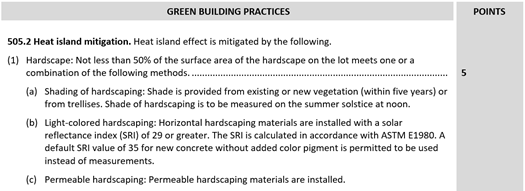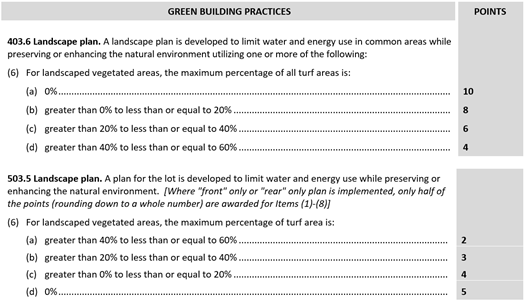

Growing up, playing on artificial turf (AT) was a luxury and a way to prolong sport seasons during the time when natural turf fields were rendered unplayable due to weather conditions. Living in Alaska, it was common to see athletic fields with pools of water, snow, and bare patches late into May. Playing football under said conditions was an unpleasant experience to say the least. When playing for competitive teams, AT was the primary field type to reduce injury and provide athletes with the ability to run, make breaks, and tackle as if they were playing on a well-groomed grass field. No more rolling ankles on uneven patches, no more scrapes and bruises from landing on snow/ice, and no more one-dimensional playbooks on offense because wide receivers were unable to make breaks to create separation from defensive backs.
Those benefits aside, as of late, the artificial material has been a source of controversy over its environmental impact and product regulation. Is AT an innovative green practice that enhances both environmental and athletic performance, or is turf the better landscaping material that should not be replaced? This blog will try to tackle these questions, decide whether AT would qualify to earn points under the National Green Building Standard ICC-700 (NGBS) practice 505.2 (1) Heat island mitigation, and discuss if AT should be incentivized at all in the NGBS.
What is AT and how is it made? While AT comes in many forms and specifications, this blog will solely focus on AT that passes the voluntary requirements of the Synthetic Turf Council (STC), an industry association that regulates maintenance, manufacturing and disposal of AT. STC guidelines stipulate AT must be formed of approximately 99% used whole vulcanized DOT tires (tires compliant with the U.S. Department of Transportation's safety standards) for over the road. STC studies show about 95 percent of the existing fields in North America use recycled rubber infill exclusively or in a mixture with sand or alternative infills, a percentage that has grown annually. In summary, AT removes old rubber tires from landfills, cuts down on water consumption, pollutants, and maintenance needed for turf.
The STC website makes replacing turf with AT sounds like a no brainer, but is that the complete story?
Let’s begin with a few definitions and considerations. NGBS defines hardscape as “asphalt, concrete, masonry, stone, wood, and other non-plant elements external to the building shell on a landscape”. Permeable material is defined as “a material that permits the passage of water vapor and/or liquid”. The figure below shows NGBS practice 505.2 and the compliance methods to earn 5 optional points toward building certification.

So, this begs the question, does AT meet 505.2(c) as permeable hardscaping? When the NGBS Green Team initially met to discuss this question, three issues arose. First, does AT meet the hardscaping definition. Second, does it meet the practice’s intent which is heat island mitigation? Last, when selecting surface materials, is the architect/specifier choosing to replace traditional hardscape (concrete/asphalt) with AT or is it more likely that they are substituting AT for natural turf? These questions led to a final overarching debate that led beyond strict compliance with the NGBS practice and intent, the question arose if AT was environmentally preferable and should be incentivized at all for buildings seeking NGBS Green certification.
As it stands, AT is not sufficient to earn points for buildings seeking NGBS Green certification. AT does not satisfy the intent of a hardscape or meet the practice’s intent of heat island mitigation. No existing practice incentivizes substituting AT for natural turf, but there is an argument projects located in arid climates should do so. Two practices that could be amended to include AT are 403.6 (6)/503.5 (6) Landscape plan under site/lot design respectively. The figure below shows NGBS practices 403.6 (6)/503.5 (6).

The amendment would incentivize minimizing the maximum percentage of AT areas in arid climates for landscaped vegetated areas. Only projects zoned in dry (B) locations would qualify for the suggested practices.
While the limited maintenance and reduction of water consumption are ideal, research is ongoing for the long-term environmental impact of AT, and the STC is still a voluntary council, meaning AT companies must only oblige by the policies of local authority.
We are calling on you to help settle the argument! As the section is aptly named “Heat island mitigation,” the exclusion of AT as a compliance method is practical, as AT fields are between 40 to 70 degrees warmer than the ambient temperature subject to direct sunlight. While more heat resistance AT exists, the manufacturing process is less environmentally conscious.
What about under site/lot design? That’s where you come in. Weighing out some pros and cons, the argument for AT seems valid.
| ARTIFICIAL TURF BRIEF SUMMARY | |
| PROS | CONS |
| Reduced irrigation | Lowly regulated manufacturing process |
| Aesthetically pleasing and functional during all seasons | 40 to 70 degrees warmer under direct sunlight |
| No need for fertilization | Studies ongoing on the bleed/runoff |
| Removes plastic from infills | Production can cause pollution/hazardous waste |
| Long lifespan (>10yr) | Must be fully replaced after lifespan |
| Reduced maintenance | High upfront cost |
We are seeking input from the NGBS community to determine if AT is an effective method for a project to minimize the environmental footprint of a site/lot. From construction industry stakeholders to NGBS Green partners, you all have a different perspective on AT and we want to hear from you as the AT industry continues to expand. Contact us here to keep the conversation going!
Reference
Synthetic Turf Council. Frequently Asked Questions, 2022, https://www.syntheticturfcouncil.org/page/FAQs. Accessed 07 Jun. 2022.
Synthetic Turf Field Recycled Tire Crumb Rubber Research Under the Federal Research Action Plan, 2022, https://www.epa.gov/sites/default/files/2019-08/documents/synthetic_turf_field_recycled_tire_crumb_rubber_research_under_the_fede al_research_action_plan_final_report_part_1_volume_2.pdf
***